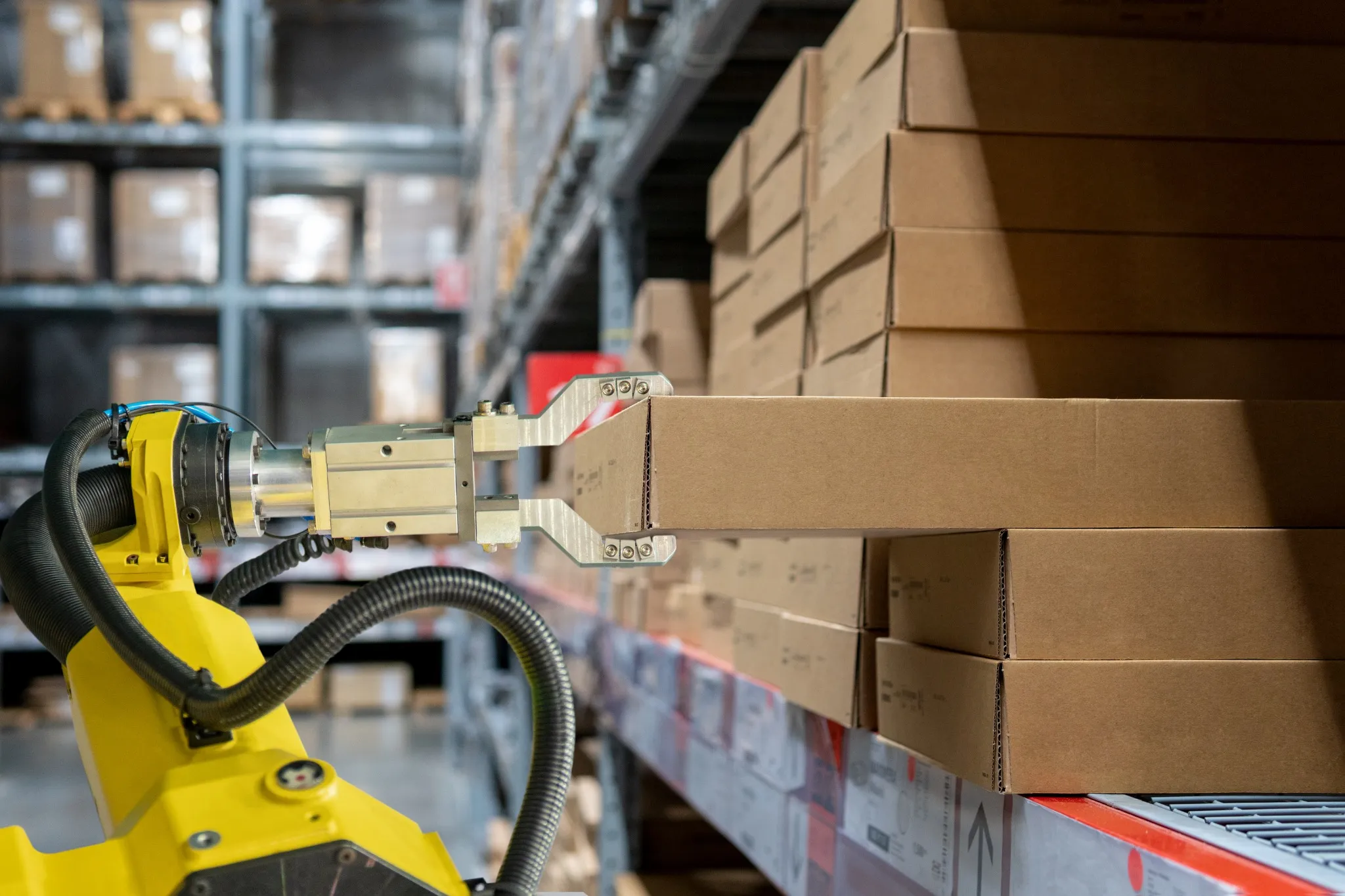Executive Summary
Supply chains are under more pressure than ever to perform - not just reliably, but intelligently. As complexity grows across sourcing, distribution, and customer expectations, technology has become a critical lever for maintaining control, improving responsiveness, and delivering better business outcomes. But with so many platforms and tools on the market, choosing the right solution can be overwhelming.
This whitepaper offers a practical framework for evaluating and implementing supply chain technology that fits your business and your goals. From end-to-end visibility and predictive analytics to smart shipping solutions, we explore how to prioritize and apply the right innovations to increase efficiency, resilience, and customer value.
The Role of Technology in the Modern Supply Chain
Supply chain technology is no longer solely about automation, it's about insight, agility, and strategic advantage. The most effective businesses are those that leverage connected systems to manage supply chain flow in real time, uncover patterns through data, and make faster, better-informed decisions.
Key capabilities enabled by modern technologies include:
- End-to-end visibility: into inventory, orders, transportation, and supplier status
- Advanced analytics: to optimize operations, reduce uncertainty, and improve forecasting
- Smart shipping solutions: that enable real-time tracking, carrier optimization, and exception management
- Automation of routine processes: to increase throughput and reduce manual errors
- Scenario planning tools: for proactive risk mitigation and agile response
While the technology landscape is rich with opportunity, not every tool will be the right fit. Strategic selection of the technology used throughout your supply chain is critical.
Considerations for Choosing the Right Supply Chain Technology
1. Anchor to Business Objectives
Before evaluating vendors or tools, clearly define the business challenges you’re solving. Whether it’s reducing lead time, improving warehouse throughput, lowering logistics costs, or enhancing forecast accuracy, your business goal should guide technology selection - not the other way around.
2. Map the Current Technology Landscape
Conduct a full audit of your existing supply chain technology stack and processes, looking at systems like your WMS, TMS, ERP, planning tools and homegrown processes. Where are the gaps? What systems are underutilized? What manual processes are slowing you down? This diagnostic step prevents duplication and reveals areas for the greatest ROI.
3. Prioritize Interoperability and Scalability
Choose platforms that integrate well across your ecosystem and can grow with your business. Whether adding new sites, partners, or shipping lanes, your tech stack should scale without requiring full replacement.
Look for APIs, cloud-native platforms, and configurable architectures that support seamless data flow from planning to execution. End-to-end visibility and predictive analytics are differentiators for your supply chain performance.
4. Put Data and Analytics at the Core
Prioritize tools that aggregate data across functions and use embedded analytics, AI, or machine learning to deliver actionable insights, from forecasting demand to optimizing shipping routes.
These systems should do more than report, they should recommend, predict, and guide. Smart shipping platforms that connect fulfillment, logistics, and customer communication unlock a critical layer of supply chain performance.
Smart shipping platforms that connect fulfillment, logistics, and customer communication unlock a critical layer of supply chain performance.
5. Design for Usability and Adoption
Even the best tech will fail if it doesn’t get used. Focus on solutions that are intuitive, mobile-friendly, and backed by strong training and support. Bring operational teams into the selection process early to ensure practical fit.
6. Test Through Pilots and Iteration
Run pilot programs in controlled environments to measure the effectiveness of new tools. Monitor impact, gather feedback, and iterate before full rollout. This reduces risk and improves alignment across stakeholders.
The Business Impact of the Right Supply Chain Technology
Companies that take a deliberate, strategic approach to supply chain technology gain a measurable edge across key performance areas:
- Increased Visibility: Real-time data across the network enables faster response to changes and disruptions.
- Smarter Decisions: Embedded analytics transform raw data into forward-looking insights.
- Cost Efficiency: Optimized shipping, leaner inventory, and better planning reduce operational costs.
- Customer Satisfaction: On-time delivery and proactive communication improve service levels.
- Greater Resilience: Scenario modeling and network visibility improve resilience to disruption.
Conclusion: Technology is a Strategic Supply Chain Enabler
In a supply chain environment defined by change and complexity, technology is not just a supporting function, it is a strategic differentiator. Organizations that approach supply chain technology with a clear strategy, an eye for integration, and a commitment to continuous improvement will emerge as leaders in operational excellence and customer value.
Whether it’s unlocking real-time tracking, gaining predictive insight, or simplifying last-mile delivery, the impact of smart supply chain technology is clear. The key is choosing with intention and executing with clarity.
About the Author

Ruben Leyvas
UPS Customer Solutions | RFID & Technology Manager
With over 30 decades working in Supply Chain Technology, Ruben has extensive experience designing and delivering technology-driven logistics solutions, specializing in bridging IT innovation with operational excellence to transform supply chains. His work spans from RFID-enabled track-and-trace systems to fully automated dark distribution centers, helping companies scale operations, improve visibility, and compete on a global stage. Partnering with forward-thinking organizations, Ruben is passionate about developing scalable, future-ready solutions that reduce costs, enhance customer experiences, and position businesses for long-term success.
 Customer
Customer 


